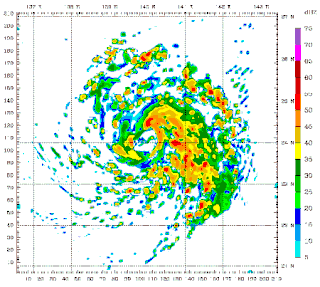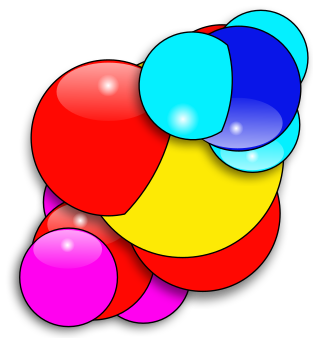
A supercomputer is a computer with a high level of performance as compared to a general-purpose computer. The performance of a supercomputer is commonly measured in floating-point operations per second (FLOPS) instead of million instructions per second (MIPS). Since 2017, there have existed supercomputers which can perform over 1017 FLOPS (a hundred quadrillion FLOPS, 100 petaFLOPS or 100 PFLOPS). For comparison, a desktop computer has performance in the range of hundreds of gigaFLOPS (1011) to tens of teraFLOPS (1013). Since November 2017, all of the world's fastest 500 supercomputers run on Linux-based operating systems. Additional research is being conducted in the United States, the European Union, Taiwan, Japan, and China to build faster, more powerful and technologically superior exascale supercomputers.

Blue Gene is an IBM project aimed at designing supercomputers that can reach operating speeds in the petaFLOPS (PFLOPS) range, with low power consumption.

Parallel computing is a type of computation in which many calculations or processes are carried out simultaneously. Large problems can often be divided into smaller ones, which can then be solved at the same time. There are several different forms of parallel computing: bit-level, instruction-level, data, and task parallelism. Parallelism has long been employed in high-performance computing, but has gained broader interest due to the physical constraints preventing frequency scaling. As power consumption by computers has become a concern in recent years, parallel computing has become the dominant paradigm in computer architecture, mainly in the form of multi-core processors.

Molecular dynamics (MD) is a computer simulation method for analyzing the physical movements of atoms and molecules. The atoms and molecules are allowed to interact for a fixed period of time, giving a view of the dynamic "evolution" of the system. In the most common version, the trajectories of atoms and molecules are determined by numerically solving Newton's equations of motion for a system of interacting particles, where forces between the particles and their potential energies are often calculated using interatomic potentials or molecular mechanical force fields. The method is applied mostly in chemical physics, materials science, and biophysics.

Computer simulation is the process of mathematical modelling, performed on a computer, which is designed to predict the behaviour of, or the outcome of, a real-world or physical system. The reliability of some mathematical models can be determined by comparing their results to the real-world outcomes they aim to predict. Computer simulations have become a useful tool for the mathematical modeling of many natural systems in physics, astrophysics, climatology, chemistry, biology and manufacturing, as well as human systems in economics, psychology, social science, health care and engineering. Simulation of a system is represented as the running of the system's model. It can be used to explore and gain new insights into new technology and to estimate the performance of systems too complex for analytical solutions.

Folding@home is a distributed computing project aimed to help scientists develop new therapeutics for a variety of diseases by the means of simulating protein dynamics. This includes the process of protein folding and the movements of proteins, and is reliant on simulations run on volunteers' personal computers. Folding@home is currently based at the University of Pennsylvania and led by Greg Bowman, a former student of Vijay Pande.
A physics processing unit (PPU) is a dedicated microprocessor designed to handle the calculations of physics, especially in the physics engine of video games. It is an example of hardware acceleration.
Advanced Numerical Research and Analysis Group (ANURAG) is a laboratory of the Defence Research and Development Organisation (DRDO). Located in Kanchanbagh, Hyderabad, it is involved in the development of computing solutions for numerical analysis and their use in other DRDO projects.

The SGI Origin 2000 is a family of mid-range and high-end server computers developed and manufactured by Silicon Graphics (SGI). They were introduced in 1996 to succeed the SGI Challenge and POWER Challenge. At the time of introduction, these ran the IRIX operating system, originally version 6.4 and later, 6.5. A variant of the Origin 2000 with graphics capability is known as the Onyx2. An entry-level variant based on the same architecture but with a different hardware implementation is known as the Origin 200. The Origin 2000 was succeeded by the Origin 3000 in July 2000, and was discontinued on June 30, 2002.
A massively parallel processor array, also known as a multi purpose processor array (MPPA) is a type of integrated circuit which has a massively parallel array of hundreds or thousands of CPUs and RAM memories. These processors pass work to one another through a reconfigurable interconnect of channels. By harnessing a large number of processors working in parallel, an MPPA chip can accomplish more demanding tasks than conventional chips. MPPAs are based on a software parallel programming model for developing high-performance embedded system applications.
D. E. Shaw Research (DESRES) is a privately held biochemistry research company based in New York City. Under the scientific direction of David E. Shaw, the group's chief scientist, D. E. Shaw Research develops technologies for molecular dynamics simulations and applies such simulations to basic scientific research in structural biology and biochemistry, and to the process of computer-aided drug design.
Desmond is a software package developed at D. E. Shaw Research to perform high-speed molecular dynamics simulations of biological systems on conventional computer clusters. The code uses novel parallel algorithms and numerical methods to achieve high performance on platforms containing multiple processors, but may also be executed on a single computer.

Tianhe-I, Tianhe-1, or TH-1 is a supercomputer capable of an Rmax of 2.5 peta FLOPS. Located at the National Supercomputing Center of Tianjin, China, it was the fastest computer in the world from October 2010 to June 2011 and was one of the few petascale supercomputers in the world.

Approaches to supercomputer architecture have taken dramatic turns since the earliest systems were introduced in the 1960s. Early supercomputer architectures pioneered by Seymour Cray relied on compact innovative designs and local parallelism to achieve superior computational peak performance. However, in time the demand for increased computational power ushered in the age of massively parallel systems.

Titan or OLCF-3 was a supercomputer built by Cray at Oak Ridge National Laboratory for use in a variety of science projects. Titan was an upgrade of Jaguar, a previous supercomputer at Oak Ridge, that uses graphics processing units (GPUs) in addition to conventional central processing units (CPUs). Titan was the first such hybrid to perform over 10 petaFLOPS. The upgrade began in October 2011, commenced stability testing in October 2012 and it became available to researchers in early 2013. The initial cost of the upgrade was US$60 million, funded primarily by the United States Department of Energy.
Adaptive sampling is a technique used in computational molecular biology to efficiently simulate protein folding when coupled with molecular dynamics simulations.

The high performance supercomputing program started in mid-to-late 1980s in Pakistan. Supercomputing is a recent area of Computer science in which Pakistan has made progress, driven in part by the growth of the information technology age in the country. Developing on the ingenious supercomputer program started in 1980s when the deployment of the Cray supercomputers was initially denied.
Daniel Ramot is Israeli-born American entrepreneur, and scientist. He is the co-founder and CEO of TransitTech company, Via.
A domain-specific architecture (DSA) is a programmable computer architecture specifically tailored to operate very efficiently within the confines of a given application domain. The term is often used in contrast to general-purpose architectures, such as CPUs, that are designed to operate on any computer program.








